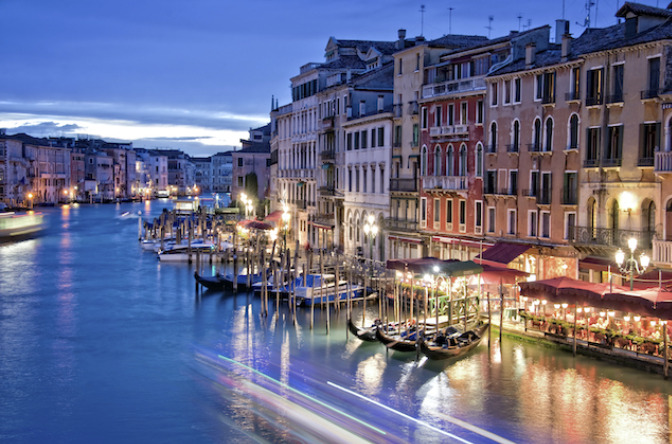
Venice is a strong producer of glassblowing, and by the Middle Ages it became the biggest industry in the city.
Glassblowing in the West originated near the start of the establishment of the Roman Empire in the 1st century BCE. Roman artisans copied techniques they learned from Syrian craftsmen where they could blow air into molten glass to make a bubble. This art, initially used to create decorative illumination in public bathhouses, spread across the Empire. Venice, in particular, became a strong producer of glassblowing, and by the Middle Ages it became the biggest industry in the city. Murano glassblowing, named after the islands where glassblowing artisans practiced their craft, has become synonymous with the city of Venice and is one of its major cultural exports.
What is Murano Glassblowing?
By the 1100s CE, Venice was established as the de facto capital of glassblowing in the West, and many of the artisans from the Near East emigrated to the city to share techniques and evolve the craft. But this period was also marked by several tragedies within the city. The most notable of these was the Great Fire of Venice in 1105. 23 neighborhoods and 23 churches were destroyed in the fire, and city officials noted the danger of having so many furnaces within city limits. In 1291, the Senate of Venice passed a law relocating the entire glassmaking industry to an island chain just off the coast of the city, Murano. By the 16th century, nearly half of the citizens of the islands were involved with the glassblowing trade, and glassblowers held a high position in Venetian society owing to the establishment of a guild.
Types and Techniques of Murano Glassblowing
Over the centuries, Venetian glassblowing artisans have developed novel techniques and ways to create beautiful art. Here are some of the types and techniques of glassblowing to look out for:
- Smalto Enameled Glass: enameling made objects more durable, and this was highly desirable for glassware designed for every day usage. Each individual glassblowing workshop had its own unique enamel recipe until the 19th century – after this, industrialization made enameling more standardized and easier.
- Aventurine Glass: this type of glass looks like it is filled with tiny bits of gold. During the glassblowing process, a metallic compound is added before it is cooled very slowly. As it cools, the metallic ions form into crystals, creating a beautiful, shimmering effect.
- Millefiori Glass: translated as “a thousand flowers”, this beautiful glass is multicolored and looks just like it is made out of flowers! While the technique is associated with Murano, it actually has its origins in North Africa.
Explore the World with AESU!
Are you ready to plan an adventure of a lifetime? AESU offers unique, thrilling travel programs for college students and young professionals at affordable rates. Each trip is action-packed and informal—designed just for people your own age. We are also able to design custom tours just for your group.
Experience an exhilarating adventure in 2022 on the Cosmopolitan, Great Escape, Greek Island Hopper tour, and more! 2022 tour dates are now available! If you have any questions or want help booking your next adventure, please contact AESU by calling 800-638-7640, or fill out the contact form found on our website. Follow AESU on Facebook, Twitter, Instagram, LinkedIn, and Pinterest.
